
Pre-Raphaelites - the romantics of Victorian England
The Pre-Raphaelites were a united brotherhood of artists, poets, and art critics. Their goals included the revitalization of artistic traditions and resistance against the stagnant academicism prevalent in mid-19th century Britain. In this endeavor, the Pre-Raphaelites achieved success, and their creativity is now closely associated with Victorian art.
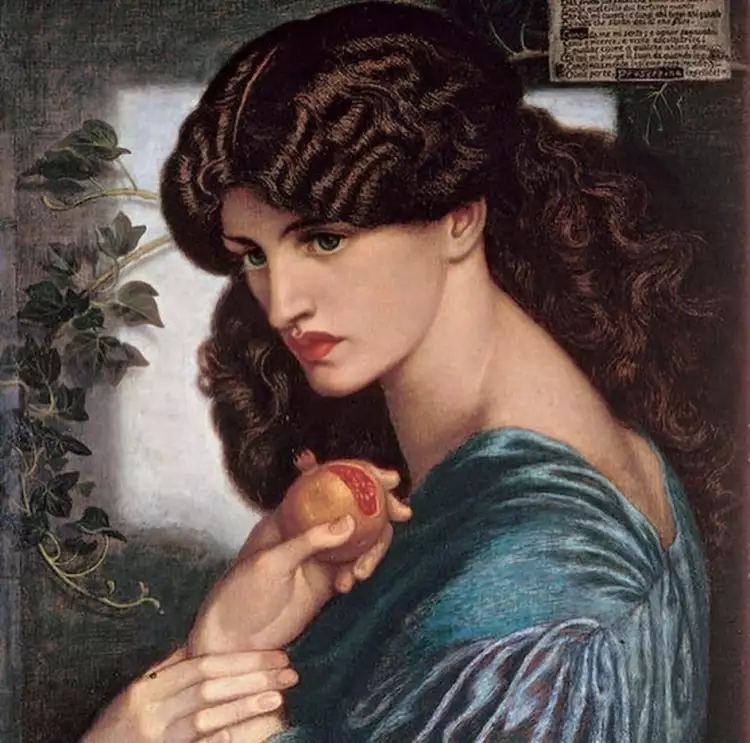 Pre-Raphaelites. Dante Gabriel Rossetti. Proserpine, 1874
Pre-Raphaelites. Dante Gabriel Rossetti. Proserpine, 1874
According to many art historians, the Pre-Raphaelites marked the onset of the modern era in painting, almost a generation ahead of the French Impressionists. There is no doubt that they exerted a strong influence on the Symbolists. Their beliefs resonated with William Morris, who revolutionized design. In literature, the ideals of this movement inspired the young John Ronald Reuel Tolkien, and in music, Claude Debussy.
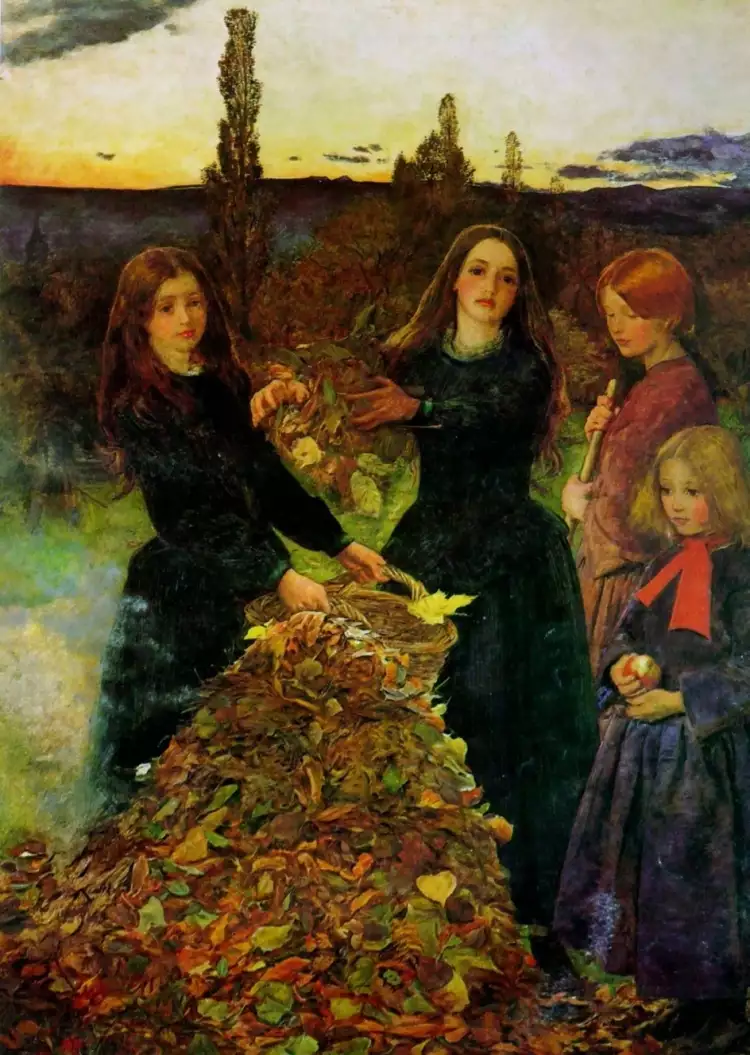 Pre-Raphaelites. John Everett Millais. Autumn Leaves, 1856
Pre-Raphaelites. John Everett Millais. Autumn Leaves, 1856
The Genesis of the Pre-Raphaelite Brotherhood and its Ideas
The Pre-Raphaelites formed their union in 1848. Initially, it consisted of seven individuals, including three painters who played crucial roles in the movement's subsequent history: the chief intellectual force behind the Brotherhood, Dante Gabriel Rossetti, the well-versed theorist William Hunt, and the incredibly talented John Millais. The eldest among them was 21 years old.
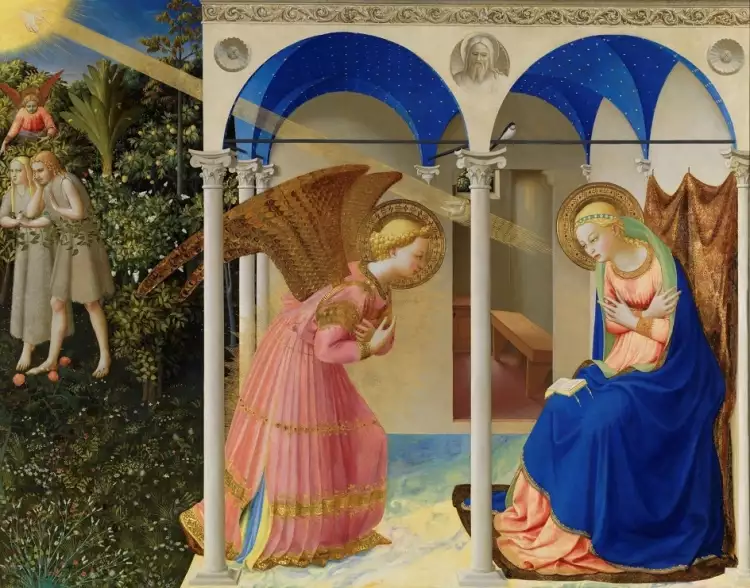 Pre-Raphaelites. Fra Beato Angelico. Annunciation, 1440-1450
Pre-Raphaelites. Fra Beato Angelico. Annunciation, 1440-1450
The core ideas of the Pre-Raphaelites are reflected in the name of the union. They considered academicism hypocritical and artificial, tracing its roots back to mannerism, which, in turn, paved the way for Raphael. Only the earlier art of the Quattrocento - vibrant and complex - was deemed free and sincere. The Pre-Raphaelites drew inspiration from it, acting as a bridge between the works of old masters and contemporary art.
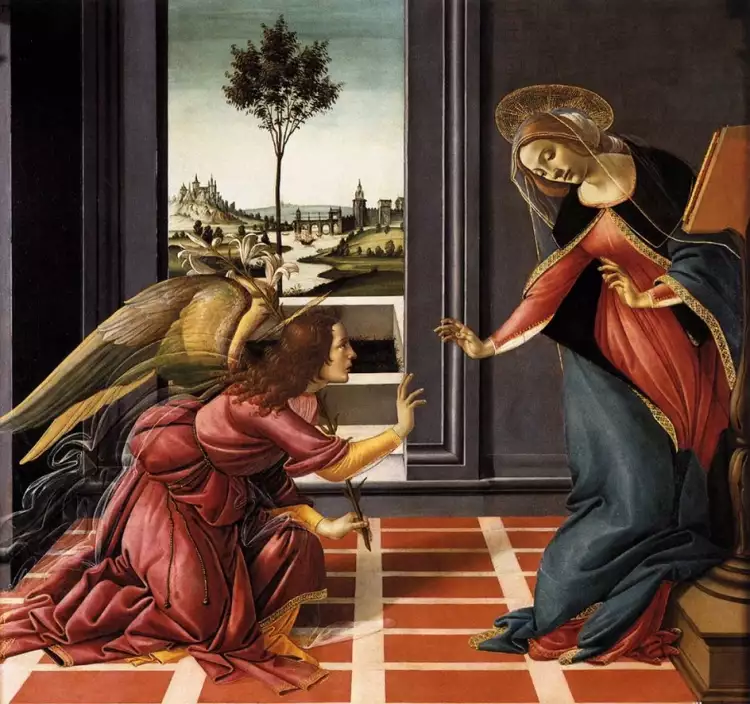 Pre-Raphaelites. Sandro Botticelli. Cestello Annunciation, 1490
Pre-Raphaelites. Sandro Botticelli. Cestello Annunciation, 1490
Here are four main principles of the Brotherhood, formulated by the poet William Michael Rossetti:
- Be sincere.
- Study nature and be able to represent it accurately.
- Avoid the influence of conventional art and sympathize only with pure and heartfelt examples from the past.
- Strive with all your might to create truly good paintings, sculptures, and poems.
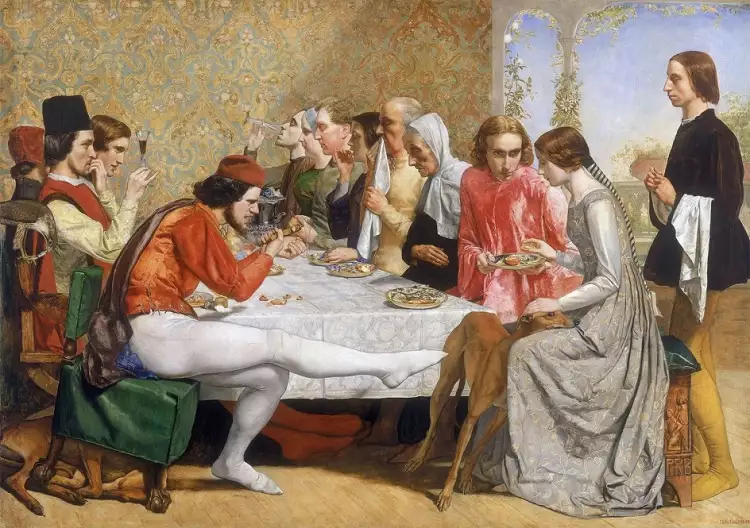 Pre-Raphaelites. John Everett Millais. Isabella, 1849
Pre-Raphaelites. John Everett Millais. Isabella, 1849
Initially, there was a certain contradiction in the ideals of the Pre-Raphaelites. On one hand, they were inspired by the spirituality and nobility of the Middle Ages, whose traditions were still strong in the Quattrocento era. On the other hand, the study of nature implied realism, unfamiliar to artists before the High Renaissance. This contradiction led to the gradual division of artists into two camps. Hunt and Millais developed a more realistic approach, while Rossetti and his followers Morris and Edward Burne-Jones emphasized medieval culture.
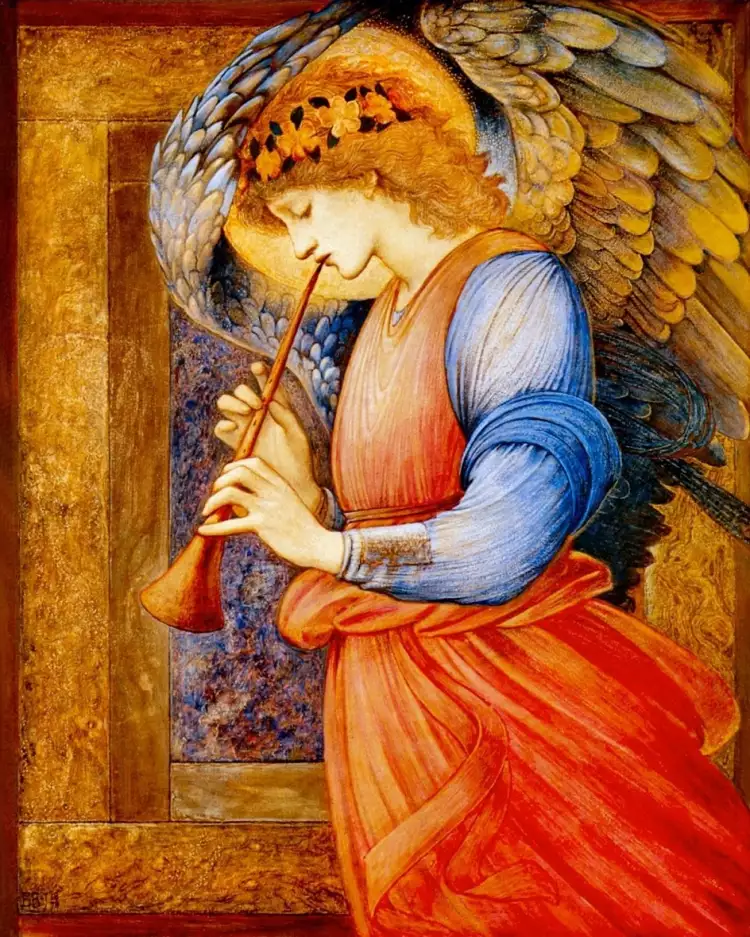 Pre-Raphaelites. Edward Burne-Jones. An Angel Playing a Flageolet, 1878
Pre-Raphaelites. Edward Burne-Jones. An Angel Playing a Flageolet, 1878
The Dissolution of the Pre-Raphaelites
Initially, the Pre-Raphaelites planned to exhibit their works incognito under the abbreviation PRB (Pre-Raphaelite Brotherhood). This designation first appeared on Rossetti's painting "The Girlhood of Mary Virgin," exhibited in 1850 and received restrained favorable reviews. A scandal erupted after Millais' work "Christ in the House of His Parents," which many considered blasphemous. Charles Dickens wrote that Mary in this canvas is ugly, and the Holy Family looks like slum alcoholics.
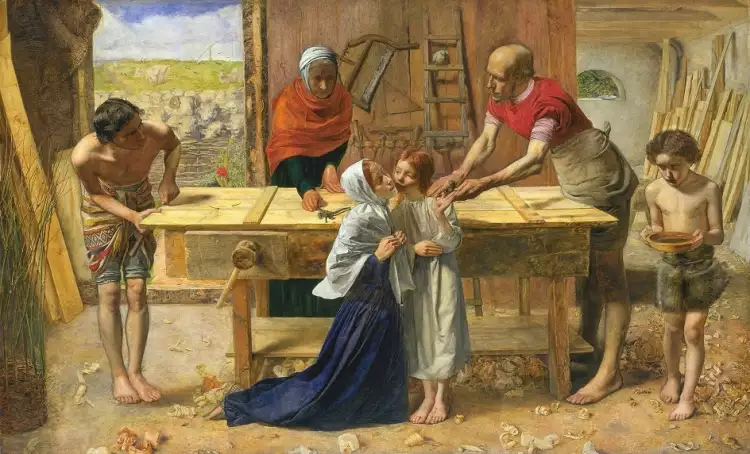 Pre-Raphaelites. John Everett Millais. Christ In The House Of His Parents, 1850
Pre-Raphaelites. John Everett Millais. Christ In The House Of His Parents, 1850
The new movement found an influential advocate - the renowned art critic John Ruskin. Nevertheless, the generally cold reception marked the beginning of the Brotherhood's dissolution. Some left it, others could not agree on replacements. The union completely fell apart in 1853, concluding the Golden Age of the Pre-Raphaelites, but their influence extended far beyond these boundaries. Artists continued to develop their previous ideas in one form or another, and followers emerged until the beginning of the 20th century.
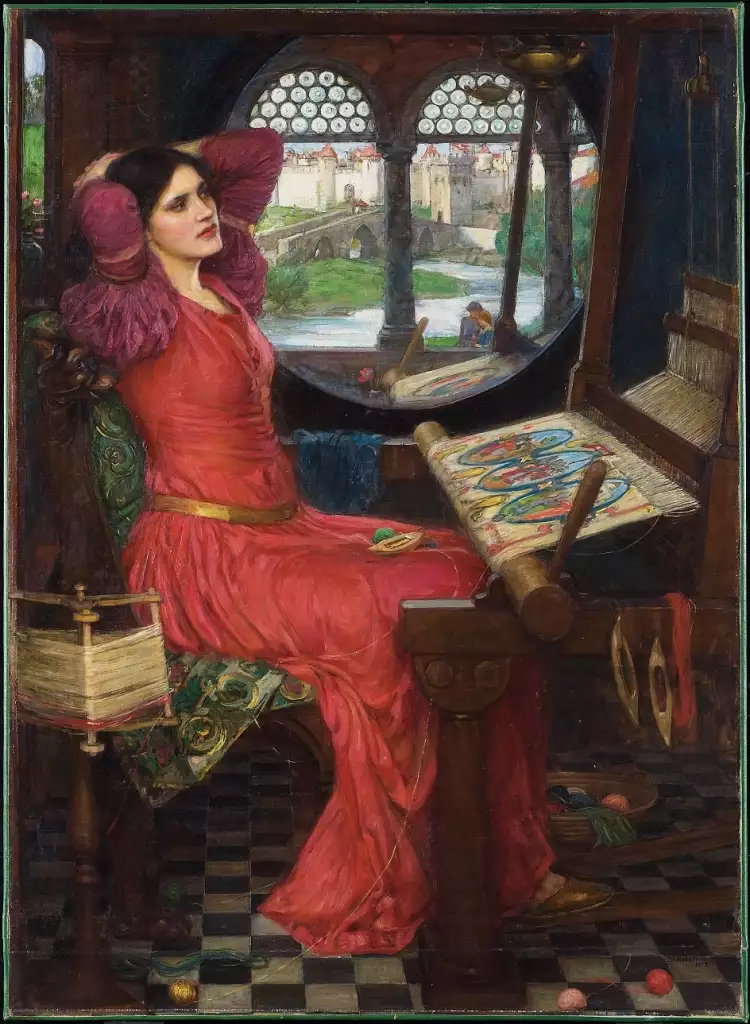 Pre-Raphaelites. John William Waterhouse. I Am Half-Sick of Shadows, Said the Lady of Shalott, 1915
Pre-Raphaelites. John William Waterhouse. I Am Half-Sick of Shadows, Said the Lady of Shalott, 1915
The Most Famous Pre-Raphaelite Artists
In addition to the early members of the Brotherhood, experts attribute more than 30 names to this movement, and a similar number of painters show noticeable signs of Pre-Raphaelite influence. Here are some of the most prominent masters associated with this union.
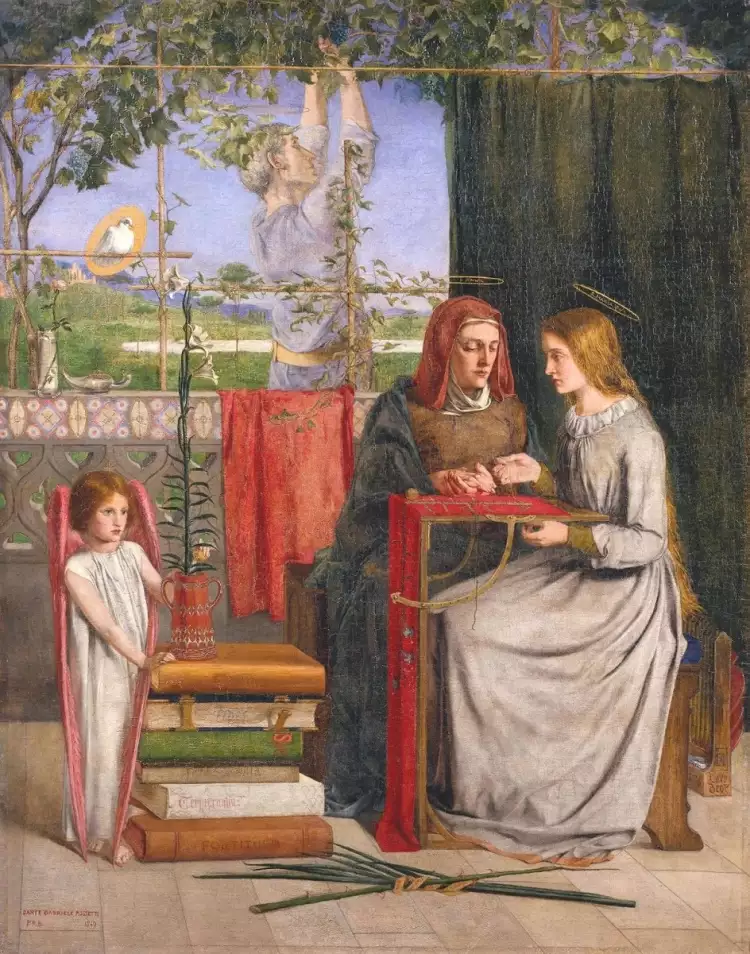 Pre-Raphaelites. Dante Gabriel Rossetti. The Girlhood of Mary Virgin, 1849
Pre-Raphaelites. Dante Gabriel Rossetti. The Girlhood of Mary Virgin, 1849
Dante Gabriel Rossetti
This artist, named after the great author of the "Divine Comedy," was born into a large and talented family of Italian origin. His father was a professor at the Royal College, his brother a poet, his sister an author of a book about Dante, and another sister a poetess. In 1850, Rossetti meets his Beatrice - Elizabeth Siddal, who becomes his muse and wife. She is depicted in many of her husband's paintings, as well as in Millais's famous masterpiece "Ophelia."
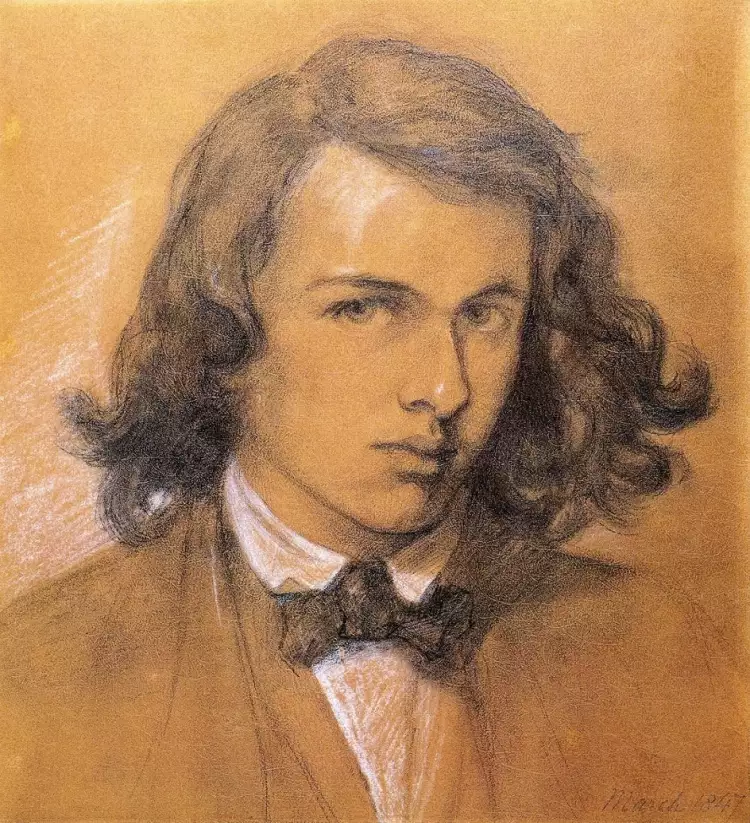 Pre-Raphaelites. Dante Gabriel Rossetti. Self-portrait, 1847
Pre-Raphaelites. Dante Gabriel Rossetti. Self-portrait, 1847
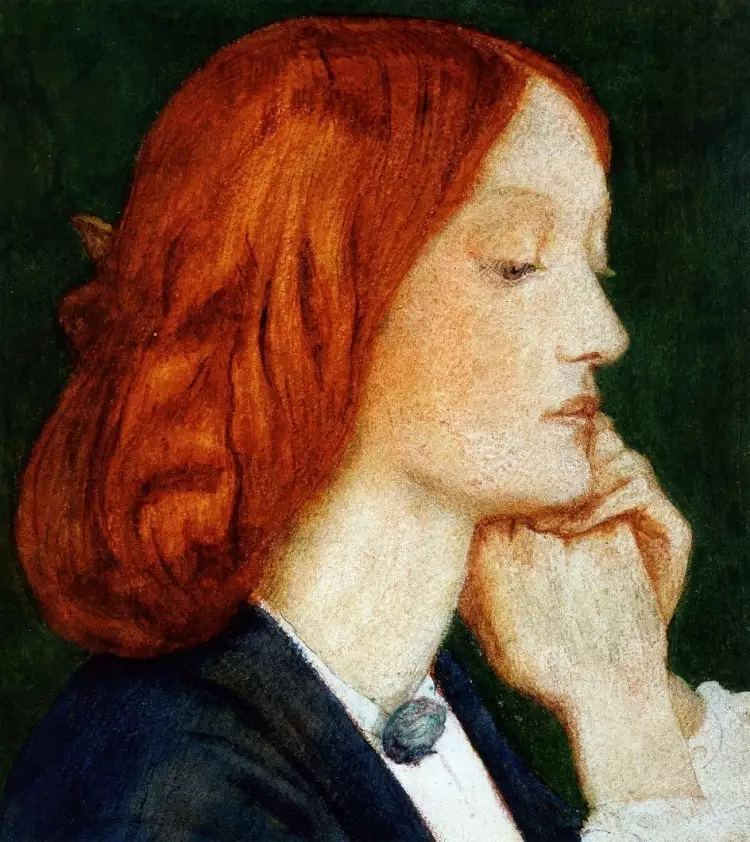 Pre-Raphaelites. Dante Gabriel Rossetti. Portrait of Elizabeth Siddal, 1954
Pre-Raphaelites. Dante Gabriel Rossetti. Portrait of Elizabeth Siddal, 1954
William Holman Hunt
For Hunt, the path to art was not easy: born into a poor family, he started working at the age of 12, dedicating his free time to drawing. But by the age of 16, he began earning with copies of paintings and commissioned portraits, and then entered the Royal Academy of Arts, where he met Rossetti and Millais. He was the only one of the three who read Ruskin's works, whose ideas resonated with young artists. Hunt is the most religious of the Pre-Raphaelites, and his work is characterized by spiritual quests.
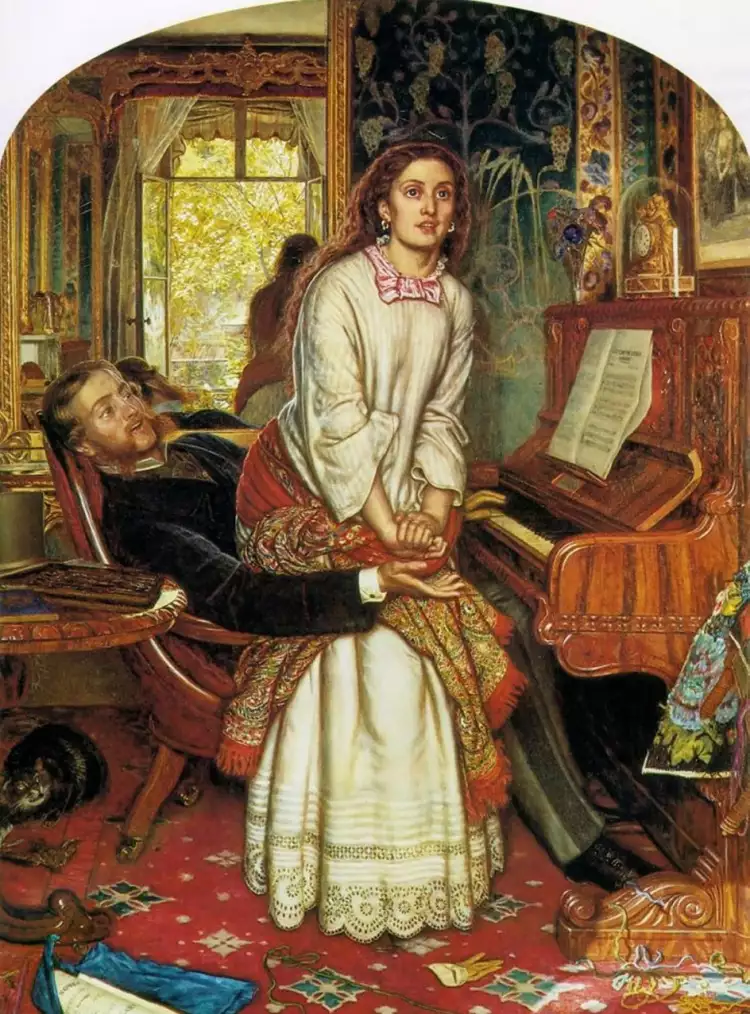 Pre-Raphaelites. William Holman Hunt. The Awakening Conscience, 1953
Pre-Raphaelites. William Holman Hunt. The Awakening Conscience, 1953
John Everett Millais
This incredibly talented artist gained fame in childhood: he is the only person in history who managed to enter the Royal Academy of Arts at the age of 11. By the age of 15, he was already creating works of the same level as experienced academicians. Millais, during his participation in the Brotherhood, closely associated with Ruskin and even temporarily lived with him. The result was Ruskin's divorce from his wife Effie and her subsequent marriage to the young painter.
 Pre-Raphaelites. John Everett Millais. Ophelia, 1952
Pre-Raphaelites. John Everett Millais. Ophelia, 1952
The family was happy and large, but over time, Millais came to appreciate prestige and income in his art rather than ideological content. Already in 1853, he became an academician, which outraged his Pre-Raphaelite friends. Later, he primarily painted commissioned portraits and sentimental scenes with children. Ruskin called this an incredible and unprecedented fall, although he was, of course, not impartial.
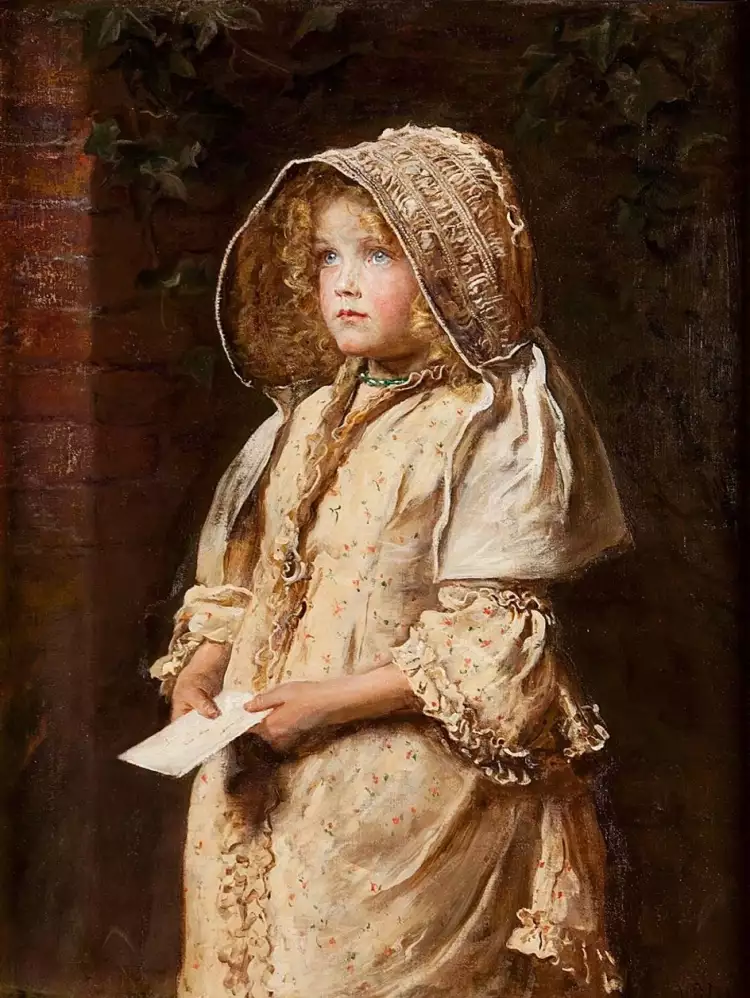 Pre-Raphaelites. John Everett Millais. Letter for the Squire, 1885
Pre-Raphaelites. John Everett Millais. Letter for the Squire, 1885
Edward Burne-Jones
He is a representative of the younger generation of Pre-Raphaelites, a disciple of Rossetti, and a close friend of Morris. Burne-Jones achieved rare mastery in working with color and creating various artistic effects. For example, he painted tall pictures on boards with a delicate vertical texture, creating the impression of an ancient tapestry. He could apply paint in a way that gave the impression of working in gold or silver. Burne-Jones also gained fame as a master of decorative applied arts. He created stained glass windows for Morris's company.
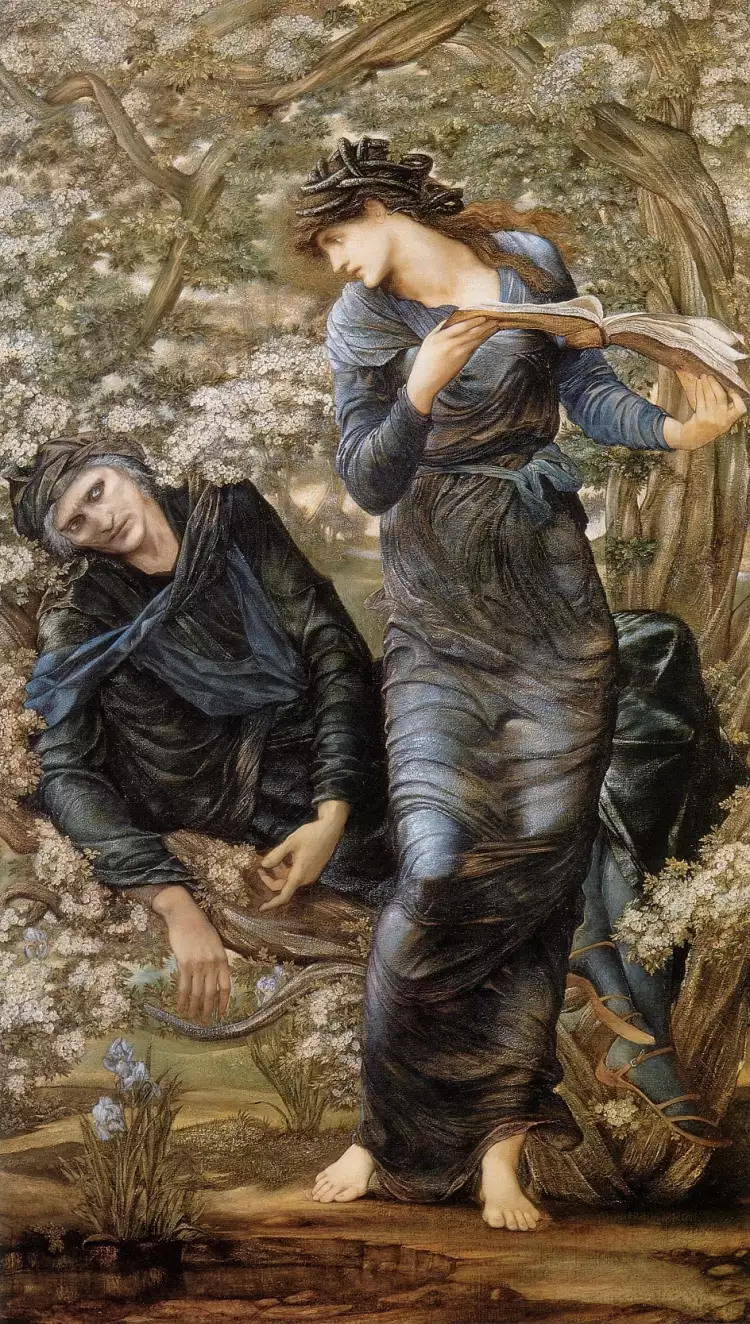 Pre-Raphaelites. Edward Burne-Jones. The Beguiling of Merlin, 1874
Pre-Raphaelites. Edward Burne-Jones. The Beguiling of Merlin, 1874
The legacy of the Pre-Raphaelites continued to influence minds until the First World War. In the harsh post-war period, their works began to be considered too sentimental and detached from reality. But by the 1960s, interest in the Brotherhood was revived. Large exhibitions are regularly held, attracting numerous visitors even in the 21st century.
Such significant influence is easily explained: the works of the Pre-Raphaelites are truly close to perfection. It is a rare case where artists paid equal attention to the line, which was considered crucial for the academicians, and to color, which was significant for the Impressionists. Many masters were excellent draftsmen and, in addition to painting, left brilliantly executed graphics. And their luxurious colors remain an endless source of inspiration for artists, photographers, and designers even today.
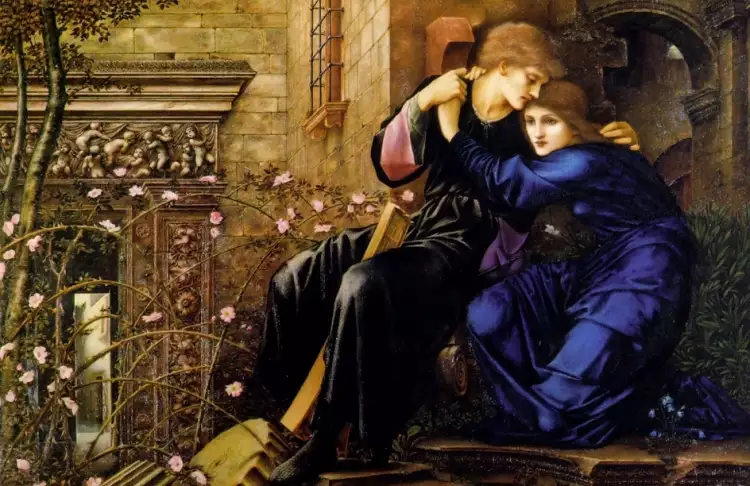 Pre-Raphaelites. Edward Burne-Jones. Love Among the Ruins, 1873
Pre-Raphaelites. Edward Burne-Jones. Love Among the Ruins, 1873
On the Very Important Lot website, it is convenient to choose and purchase works of art by European and Russian masters. In online catalogs, you can find paintings similar in style to the works of the Pre-Raphaelites and belonging to other significant movements in painting.
 Installation - the modern art of striking three-dimensional compositions
Installation - the modern art of striking three-dimensional compositions 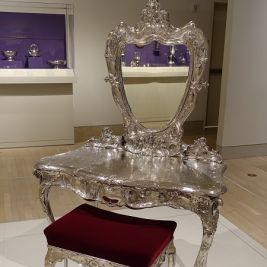 American Silver - From Colonial Times to the Present
American Silver - From Colonial Times to the Present 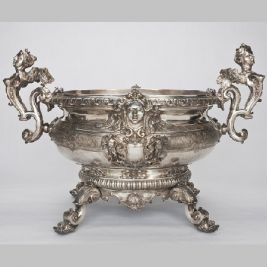 English Silver Tableware - History, Fashion, and Styles
English Silver Tableware - History, Fashion, and Styles 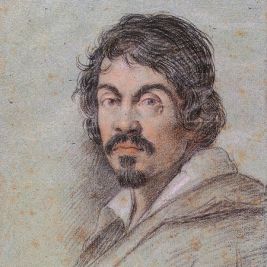 Caravaggio was a brilliant painter, an art innovator, and a thorough rebel
Caravaggio was a brilliant painter, an art innovator, and a thorough rebel 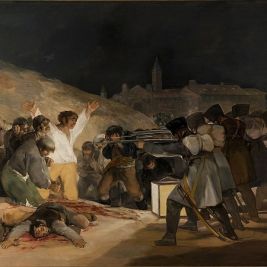 The top 10 most famous Spanish artists - the greatest masters of art of all time
The top 10 most famous Spanish artists - the greatest masters of art of all time 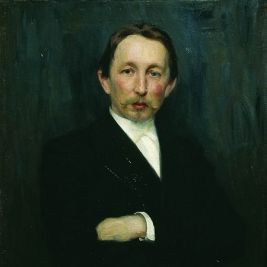 Apollinary Vasnetsov and the world of his landscapes: Moscow, the Russian North, the Urals and the Siberian expanses
Apollinary Vasnetsov and the world of his landscapes: Moscow, the Russian North, the Urals and the Siberian expanses  The religious genre is profoundly spiritual and sincere art
The religious genre is profoundly spiritual and sincere art  The painting "In the Orchard" by Laura Knight is a joyful hymn to the sun and summer
The painting "In the Orchard" by Laura Knight is a joyful hymn to the sun and summer 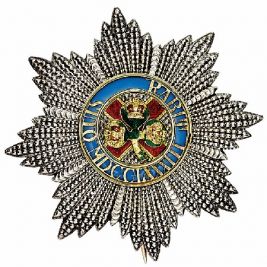 The Order of St. Patrick is the most prestigious Irish distinction
The Order of St. Patrick is the most prestigious Irish distinction 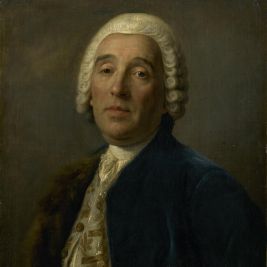 Bartolomeo Francesco Rastrelli was a brilliant Italian architect who became the greatest master of Russian architectural art of all times
Bartolomeo Francesco Rastrelli was a brilliant Italian architect who became the greatest master of Russian architectural art of all times